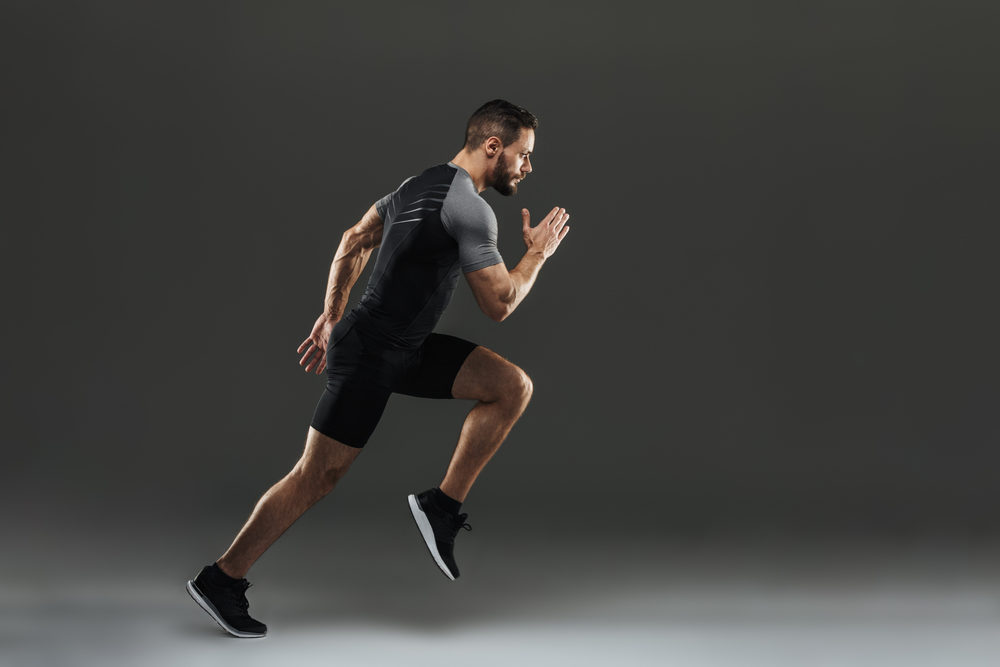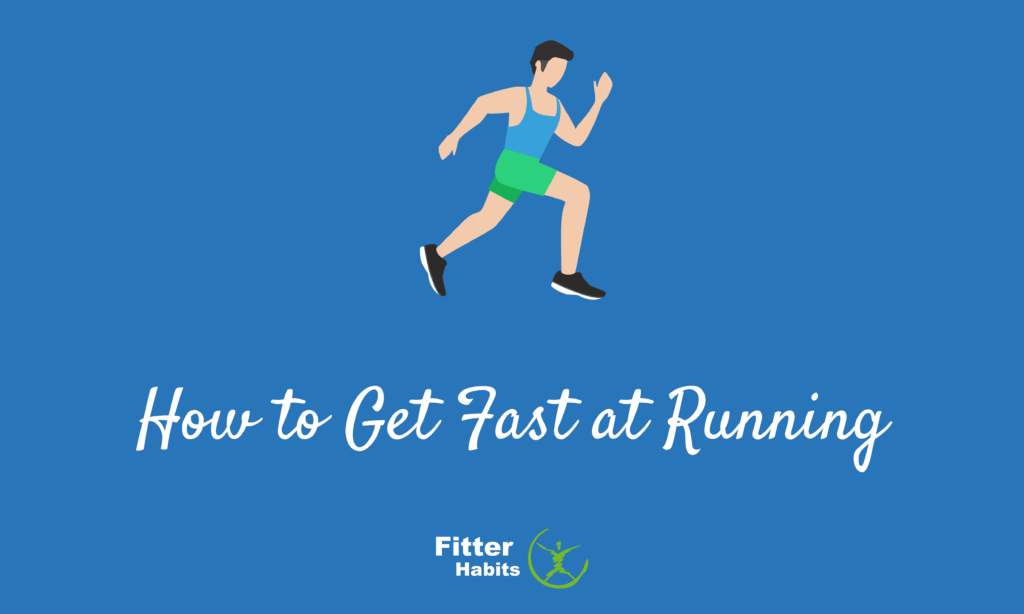Take your running workouts to new levels and improve your race timing by learning how to get fast at running!
Whether you’re training for a race or are simply looking to improve your own personal times, picking up your speed as a runner can be challenging. After all, it’s one thing to be able to run faster for a short period of time—but to truly improve your overall running times, you’ll need to be able to maintain those faster speeds for the duration of every run.
While you shouldn’t expect to become a faster runner overnight, there are some practical steps you can follow to gradually improve your speed and become a better runner in the process. Who knows? With these tips, you might eventually set a new personal record!
Contents
Step 1. Focus on Your Form

Poor form while running can really drag you down and make you more prone to injuries, which could sideline you from exercising altogether. To improve your running speeds, then, you’ll need to begin by perfecting your form.
What does proper running form look like, anyway? In general, this means that you should be “standing tall” with your ears in line with your shoulders. Ideally, your arms should also be bent about 90 degrees at your elbows and kept near your midline.
Step 2. Try Interval Training
Running faster will require you to build your endurance, too—and one of the best ways to do this is through interval training. Specifically, interval training involves alternating between periods of intense exercise and more relaxed “rest” periods to increase your endurance, stamina, and speed.
Try incorporating interval training into your running workouts, but do it gradually. This may mean starting with one interval training session per week and working your way up to several. Over the course of a few weeks, you may find that you’re able to elevate your speed more comfortably.
Step 3. Upgrade Your Running Shoes
You might not think that a difference of a few ounces in the weight of your running shoes would make a huge difference in your speed, but it really can! The less weight you’re carrying with you while you run, the more unencumbered you will be and the faster you’ll be able to go.
If you’re about to be due for a new pair of running shoes anyway, why not give a lightweight pair a try and see how it impacts your performance? Look for a shoe made out of ethyl vinyl acetate (EVA), which is one of the most lightweight yet supportive and durable shoe materials on the market today.
Step 4. Practice Your Breathing
If you’re not working on your breathing as part of your running routine, you could really be missing out. Why does how you breathe matter while you run? Because your breathing has a direct impact on how much oxygen makes its way to your muscles—and when oxygen is distributed more efficiently to your muscles, you’re able to push yourself farther (and faster).
There are plenty of great breathing exercises you can start incorporating into your runs, but there are a few important things to keep in mind. For starters, it is imperative that as a runner, you use both your nose and your mouth while you inhale and exhale. This will allow you to draw in the most oxygen possible so that it can be properly distributed to your muscles.
Step 5. Fuel Your Body Properly

You already know that what you eat can have a major impact on how you perform during your running workouts. However, if you’re looking to become a faster runner, your diet will become even more important. Specifically, you’ll want to make sure that you’re lightly fueling with carbohydrates and healthy fats before every run.
In addition to getting the right macronutrients in your diet, running faster may also be a matter of dropping some excess weight. Reaching your optimal weight will make it easier for you to pick up the pace. Fortunately, running is one of the best ways to lose weight by burning more calories than you’re taking in.
Step 6. Let Yourself Recover
As tempting as it may be to push yourself as hard as you possibly can in order to improve your running speed and performance, the reality is that your body needs time to recover. Pushing yourself too hard will only hinder your progress and possibly even cause an injury that will sideline you.
Make sure you’re working recovery days into your training and that you recognize when your body needs a break. While it’s normal to feel out-of-breath with a burning sensation in your muscles while you run, you should never push yourself to the point of feeling faint or light-headed. If you are, then it’s time to slow it down.
The Final Word on How to Get Fast at Running
Becoming a faster runner is not something that will happen overnight. However, by focusing on these tips, you will find that you can gradually increase your running speeds over time and become a more confident runner as a result.
To track your progress, you can use something as simple as a stopwatch to time your average mile and compare it week-to-week. Or, you could use one of the many free running apps that are out there to track everything from your average speed to your fastest mile!
FAQs About How to Get Fast at Running
How to get faster at sprints?
If you’re looking to improve your speed at shorter distances, focus on honing your form and technique. You’ll also want to spend a lot of time practicing belly breathing techniques to maximize your body’s oxygen absorption.
How to run faster without getting tired?
To improve your endurance while running, try fueling yourself with the right foods before your run. A light meal that is rich in carbohydrates and healthy fats can prevent fatigue. Listening to high-tempo music while running has also been proven to increase stamina.



